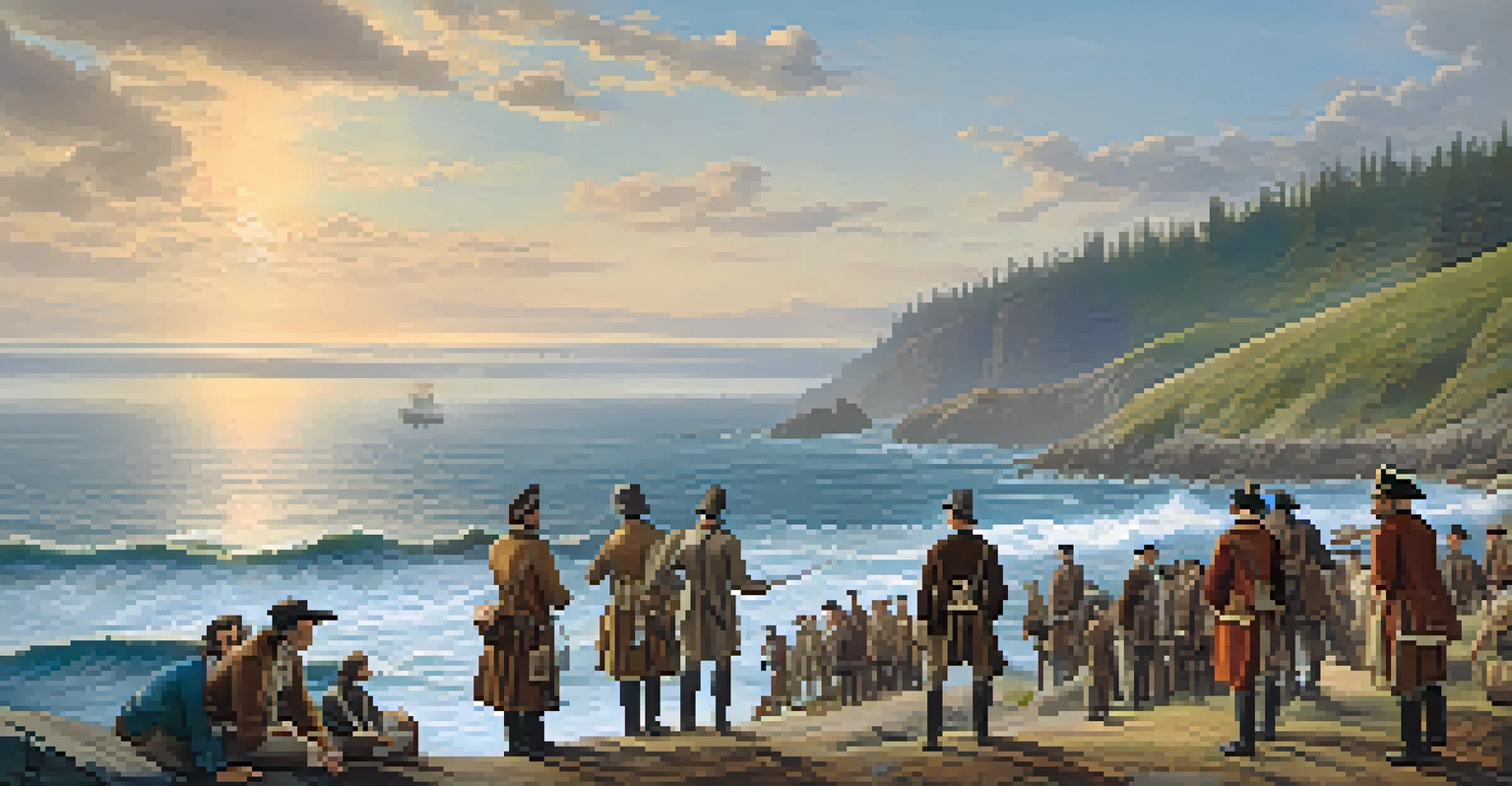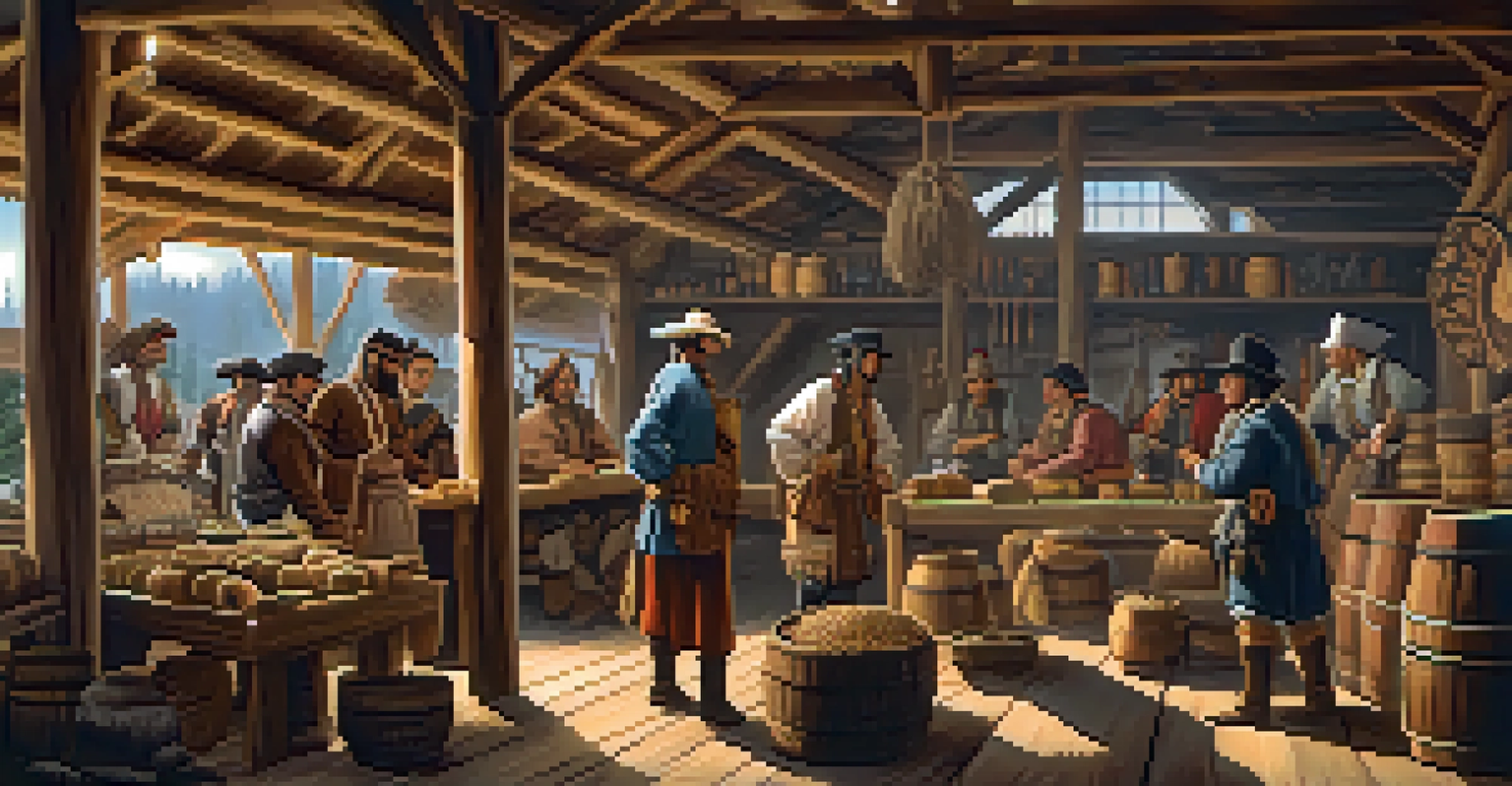The Story of European Exploration in Washington State

Early Indigenous Inhabitants of Washington State
Long before European explorers set sail, Washington State was home to numerous Indigenous tribes, each with rich cultures and traditions. These tribes, including the Coast Salish, Chinook, and Nez Perce, lived in harmony with the land, relying on its abundant resources for sustenance. Their deep understanding of the environment shaped their way of life, which was intricately connected to the rivers, forests, and coastlines. It's essential to acknowledge their significant role in the region's history as we delve into the story of European exploration.
The greatest danger in times of turbulence is not the turbulence; it is to act with yesterday's logic.
As explorers began to arrive in the 18th century, they encountered these vibrant societies, which were often met with a mixture of curiosity and conflict. The Indigenous peoples had well-established trade networks and sophisticated forms of governance that challenged the explorers' preconceived notions of 'discovery.' These encounters not only altered the course of Indigenous life but also laid the groundwork for future interactions between European settlers and Native Americans.
Understanding the Indigenous perspective is crucial for comprehending the broader narrative of exploration. Their resilience and adaptability in the face of change remain a testament to their enduring legacy, which continues to influence Washington State today. As we explore the European journey, let’s keep in mind the rich tapestry of Indigenous history that preceded it.
The Arrival of European Explorers in the 18th Century
The 1700s marked a significant turning point for Washington State with the arrival of European explorers, driven by the quest for new trade routes and resources. Spanish explorers, like Juan Pérez, were among the first to navigate the Pacific Northwest coastline, charting the waters and documenting their findings. Their voyages opened the door to further exploration, drawing the attention of other nations, particularly Britain and France, eager to stake their claim in this new territory.

British explorer Captain James Cook made notable contributions in the late 18th century, mapping extensive parts of the Pacific Northwest. His voyages not only expanded geographical knowledge but also ignited interest in the region's potential for fur trade, which would become a major economic driver. Cook's detailed logs and maps laid the groundwork for future expeditions and settlements, shaping the future of Washington State.
Indigenous Tribes Shaped History
Long before European explorers arrived, Indigenous tribes like the Coast Salish and Chinook had established rich cultures and deep connections to the land.
The arrival of these explorers was a double-edged sword. While they brought new knowledge and trade opportunities, their presence also heralded a period of disruption for Indigenous communities. The clash of cultures that followed would lead to profound changes in the social and economic landscape of the region, a theme that resonates throughout Washington's history.
The Fur Trade: A Catalyst for Settlement
The fur trade emerged as a driving force behind European interest in Washington State during the late 18th and early 19th centuries. As demand for beaver pelts soared in Europe, explorers and traders, notably the Hudson's Bay Company and the North West Company, flocked to the region. They established trading posts along key waterways, creating a network that connected Indigenous tribes with European markets, fundamentally altering traditional economies.
History is not a burden on the memory but an illumination of the soul.
These trading posts became hubs of interaction, where Indigenous peoples and European settlers exchanged goods, ideas, and cultures. However, while some communities benefited from the trade, others faced exploitation and loss of land. The dynamics of these interactions laid complex foundations for the relationships between settlers and Native Americans, often characterized by both cooperation and conflict.
As fur trading activities expanded, they attracted more settlers seeking opportunities in the burgeoning economy. Towns began to emerge, and with them, the seeds of a new society that would eventually lead to Washington's statehood were sown. This dynamic period marked a significant transition from exploration to settlement, where the impacts of European arrival became even more pronounced.
Exploration Expeditions: Lewis and Clark's Journey
One of the most iconic events in American exploration is the Lewis and Clark Expedition, which took place from 1804 to 1806. Commissioned by President Thomas Jefferson, Meriwether Lewis and William Clark set out to explore the newly acquired Louisiana Territory, which included parts of modern-day Washington State. Their journey was monumental, as they aimed to find a practical route to the Pacific Ocean, gathering valuable information about the land and its resources along the way.
In 1805, Lewis and Clark reached the mouth of the Columbia River, where they encountered various Indigenous tribes, including the Chinook and Nez Perce. These interactions were crucial for the expedition, as the Indigenous peoples provided guidance, supplies, and insights about the region. The expedition’s journals documented their experiences and observations, contributing significantly to the Western understanding of the Pacific Northwest.
Fur Trade Fueled Settlement Growth
The fur trade in the late 18th and early 19th centuries attracted European traders and settlers, fundamentally altering the economies and relationships between Indigenous peoples and newcomers.
The legacy of Lewis and Clark is multifaceted. Their exploration not only opened the door for future settlers but also highlighted the complex relationships between European Americans and Indigenous tribes. As they charted new territory, the expedition set a precedent for subsequent waves of migration and exploration that would shape Washington State's destiny.
The Role of Missionaries in Cultural Exchange
In the early to mid-19th century, missionaries played a significant role in the exploration and settlement of Washington State. These individuals often saw their work as a divine mission to convert Indigenous populations to Christianity. They established missions throughout the region, aiming to provide education and religious guidance, which inevitably influenced the cultures they encountered.
While some Indigenous people embraced Christianity and the associated lifestyle changes, others resisted, leading to cultural clashes. Missionaries documented their experiences, providing a wealth of information about Indigenous customs and languages. This documentation became an essential resource for historians, shedding light on the interactions between different cultures.
The impact of missionaries extended beyond religion; they also contributed to the establishment of schools and agricultural practices in the region. However, their presence often marked the beginning of a significant cultural transformation that would alter the Indigenous way of life. This complex legacy continues to be examined and understood within the broader context of Washington's history.
The Oregon Trail and its Influence on Migration
The Oregon Trail, a legendary route for westward expansion in the mid-19th century, played a crucial role in shaping Washington State's demographics. As families and fortune seekers traveled this challenging path, many were drawn to the promise of fertile land and opportunity in the Pacific Northwest. This mass migration led to an influx of settlers, dramatically changing the region's landscape and culture.
The trail was not just about reaching a destination; it represented the spirit of adventure and the pursuit of a better life. Pioneers faced numerous challenges, from treacherous terrain to unpredictable weather, but their determination fueled the growth of new communities. Towns began to spring up, with settlers establishing farms, businesses, and social structures that laid the foundation for future development.
Exploration Led to Cultural Conflict
The arrival of European explorers and settlers initiated a complex legacy of cultural exchange and conflict, profoundly impacting the social fabric of Washington State.
However, this migration also had profound effects on Indigenous tribes, as settlers encroached on their ancestral lands. The clash of cultures was inevitable, leading to conflicts and treaties that reshaped the social fabric of the region. Understanding the Oregon Trail's impact helps us grasp the complexity of Washington's evolution from a land of exploration to one of settlement and growth.
The Legacy of European Exploration in Washington State
The legacy of European exploration in Washington State is a tapestry woven with both opportunity and turmoil. The arrival of explorers, traders, and settlers brought new economic prospects and cultural exchanges, laying the groundwork for the state's development. However, this progress came at a significant cost, as Indigenous communities faced displacement and cultural erosion due to colonization.
Today, Washington State stands as a testament to this complex history, where the echoes of the past continue to shape its identity. From the bustling cities to the serene landscapes, the interplay between Indigenous heritage and European influence is palpable. Acknowledging this legacy is essential for fostering understanding and reconciliation as we move forward.

As we reflect on the story of European exploration, it's vital to recognize the resilience of Indigenous peoples and their ongoing contributions to the state's culture. Their voices and experiences are integral to Washington's narrative, reminding us that history is not just about those who explored and settled but also about those who have lived on this land for thousands of years. The journey of exploration is, ultimately, a shared story.